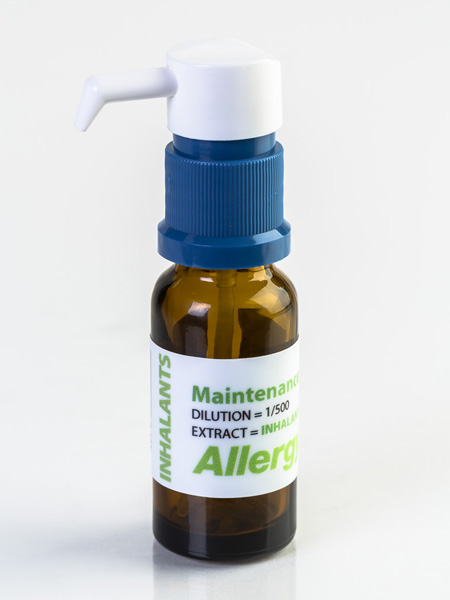So you have allergies. What to do? Antihistamines and decongestants can take the edge off of symptoms, but they don’t address the cause of the allergies. In fact, the only treatment that has been shown to affect the underlying allergy is immunotherapy.

Immunotherapy is most commonly available through allergy shots, but shots present plenty of drawbacks—the first being the shot itself. Few people relish the idea of regular injections. The other challenge of shots is time. Shots must be administered at the doctor’s office due to the risk of anaphylactic reaction. That means you have to drive to the physician’s office a couple times a week, get your injection, then wait to make sure you don’t react. If you’re as busy as most people are these days, that’s not an attractive option.
Enter sublingual immunotherapy. Sublingual immunotherapy (SLIT) works like allergy shots except that allergen extracts are taken as drops under the tongue instead of being injected into the skin. The extracts absorb into the blood system through specialized oral cells and help desensitize the body to allergens in the environment. SLIT is safer than allergy shots, so it can be taken at home. In most cases, patients take a few drops under their tongue just once a day.
So why don’t more people use SLIT? Well, in Europe, they do. In fact, about half the people who receive allergy immunotherapy in Central Europe take it in the form of allergy drops. The U.S. is quickly catching on to SLIT, thanks to the large body of sublingual immunotherapy research.
Here are just a few highlights from the hundreds of studies affirming the safety and efficacy of sublingual immunotherapy:
- A 2007 paper published by the International ARIA collaboration (Allergic Rhinitis and its Impact on Asthma) established that there is actually more current research affirming SLIT than allergy shots. In addition, the World Health Organization said that the SLIT studies represent higher-quality research than the current allergy shot studies.
- The Cochrane Review (the world’s most well-respected, evidence-based meta-analysis forum) affirmed SLIT as both effective and safe in its last major allergy-related report.
- A 2003 study published in Clinical and Experimental Allergy tracked research subjects over a 10-year period and highlighted the effectiveness of SLIT for kids with dust mite allergy.
- A 2004 placebo-controlled, double-blind, double-dummy trial did a head-to-head comparison of SLIT and allergy shots and found SLIT to demonstrate similar efficacy. (Results were published in Allergy.)
- The studies casting any doubt on SLIT’s effectiveness are few and far between, and the limited number that do are significantly outdated or have been called into question in the medical research community.
A growing number of allergy doctors and researchers in the U.S. are drawing on evidence in favor of sublingual immunotherapy to push for full governmental and regulatory affirmation of this no-hassle allergy treatment. Those attracted to the convenience and safety of allergy drops are encouraged by the abundance of solid sublingual immunotherapy research.


